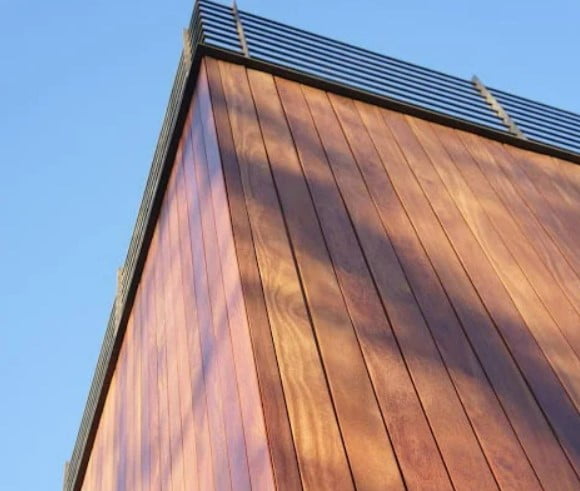Vertical Wood Siding: Why Choose It?
Siding is an essential part of your home exterior. Indeed, it enhances the property’s curb appeal, and repainting the exterior gets cumbersome over time. Two popular choices are horizontal and vertical wood siding.
Moreover, the most popular siding materials include fiber cement, vinyl, metal, brick, concrete, stone, stucco, wood, channel rustic. When properly sourced, wood is a sustainable option. To note, its regal yet natural look makes wood one of the most preferred siding.
Most of us are familiar with the horizontal layout of siding. However, is it the best option compared to vertical wood siding?
Why choose wood
Firstly, it is a hot choice for homeowners because:
It is easy to paint.
It is easy to repair and replace.
It is an eco-friendly and energy-efficient material.
It is suitably weather-resistant.
It is readily available and simple to install.
Siding upgrades make a huge difference to your home. Indeed, the main way to place wood siding is horizontal, but you can install it vertically for better results. In fact, vertical siding is quite sought-after by many.
Picking between horizontal and vertical wood siding
For horizontal wood siding, such as lap siding or dutch lap siding, the exterior boards are hung sideways from left to right. In fact, this method is most common. In vertical siding, or Board and Batten siding, the planks are arranged top-to-bottom. Indeed, this style has found its way into home designs in recent years.
Choosing between the two depends on how you want the outcome to appear. If you want your house to have a more classic, historic feel, opt for horizontal siding. However, choose vertical siding if you want to more modern look. On the other hand, you can use a mix of both to give your house a cooler look.
What are the pros of vertical wood siding?
Vertical siding can be vinyl, cedar, fiber cement, and wood. However, why is the vertical siding option popular?
It has a new, trendy look while still looking like natural wood.
Cleaning and maintenance are easy. In fact, you can use a simple garden hose or pressure cleaner to clean the facade.
Water does not get trapped in the boards. Hence, it will not be damaged by moisture.
It makes your home look taller.
It is easy to paint with any siding color in the long run.
What are the cons of vertical wood siding?
While it has lots of benefits, vertical siding has some downsides, too. So, be aware of the problems.
It is harder to install than horizontal wood siding.
The cost may be slightly higher due to the price of labor.
Some homeowners do not like the modern look of vertical siding.
Modern trends in vertical wood siding
For new houses, the latest designs focus on outward looks, sustainability, functionality, and performance. So, using good and sturdy materials makes your vertical siding design last longer. Indeed, new methods and ideas result in unique designs that make your house look better.
Choosing materials for vertical siding
Among all types of vertical siding, wood is easy to work with. Also, it is cheaper than many other materials. Initially, the most used materials for vertical siding were softwood and cedar siding.
However, recent designs have prompted the use of hardwood as well. Depending on your climate, select which wood works best for the weather in your area.
Installing vertical wood siding
Though complex to install, vertical siding is popular on homes. Indeed, there are a few ways vertical siding can be installed.
Method 1: Install the wood siding directly to the external facade of the building. This process helps create a good barrier between the planks.
Method 2: Install the wood siding over the furring strips vertically. To explain, furring strips are narrow strips of material inserted to create airflow between the planks. This method involves more significant planning, labor, and time.
Method 3: Install the wood siding vertically using rain screen components. Also, this method does not use furring strips. First, fasten the rain screen clips directly over the weather-resistant barrier. The gap made by this is good for keeping your outside wall dry.
Factors to consider while selecting the siding layout
First, siding is usually a one-time investment. So, make sure you choose wisely. Whether horizontal or vertical siding, you must consider some key points picking out your siding.
Decide your budget
Horizontal siding is cheaper than vertical siding. So, plan how much you can spend on the siding project and choose which siding you want. Also, you could mix both types of siding to fit your budget.
Judge the longevity
Horizontal siding may be easier to install, but in the long run, it costs more than vertical siding. So, decide if you want more short-run or long-run costs.
Ease of installation
Indeed, not many installers work with horizontal and vertical siding. In light of this, find a pro who works best for your needs.
Trusted siding contractors in your area
If you look, many types of sidings in the market try to look like wood. This is because of its timeless and classic appeal. However, redwood, cypress, cedar, pine, and thermally modified timber are the best options for wood siding.
Of course, Titan gives many services to help your siding. In fact, our siding contractors can work on your horizontal and vertical wood siding projects.



